Do cats have lips?
Yes, cats do, in fact, have lips; their bottom lips can be seen very clearly while their upper lips are thin and hidden by the fur growing alongside them.
Cat Lips Shape
Cats have lips of different shapes, depending on the breed. Most cats have thin lower lips with a “bubblegum” pink color and thicker upper lips in V-shape.
Unlike humans, cats lips are their less pronounced feature because of their vastly different mouth anatomy.
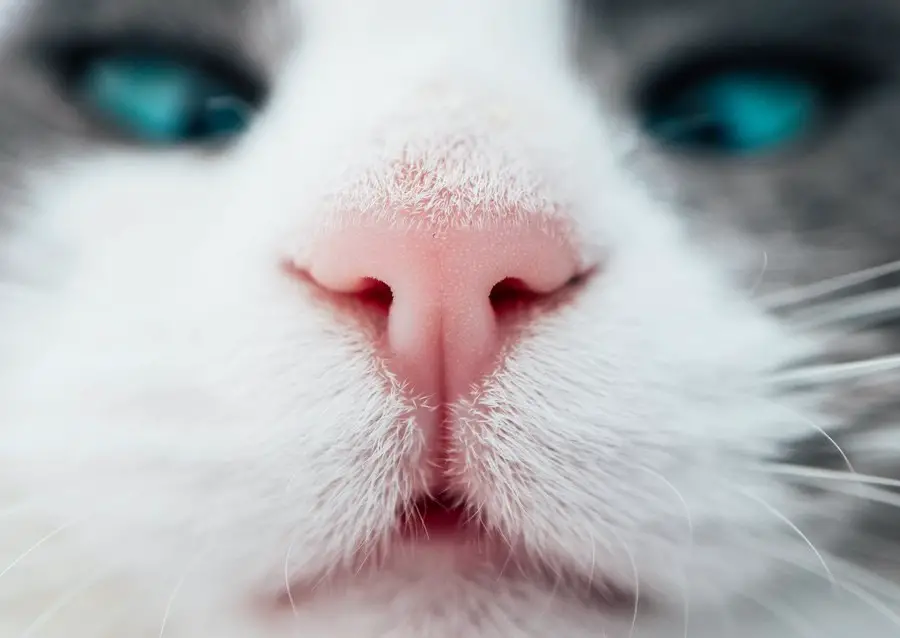
Why Do Cats Have A Split Upper Lip?
Cats have a split upper lip because of the philtrum.
The function of the philtrum, also called medical cleft, is to draws moisture up from the mouth to their nose pad via capillary action.
Having a wet noise helps trap odor particles so that cats can smell better.
Do Humans Have The Philtrum?
For humans and most primates, the philtrum survived only as a vestigial medial depression between the nose and upper lip.
We can see the remnants of the non-functional philtrum in humans in the divot above the upper lip.
What Is The Main Function Of Cat Lips?
Cat lips serve to close the mouth without any air coming inside, holding food and drink. They help to hold food between upper and lower teeth during chewing.
The lips are also part of cats tactile senses. They contain many many nerve endings and are very sensitive to touch, warmth, and cold. Lips are an important aid to cats for exploring unknown objects and sniffing out different surfaces.
Cats also use their lips serve to create different sounds and communicate with other cats and animals.
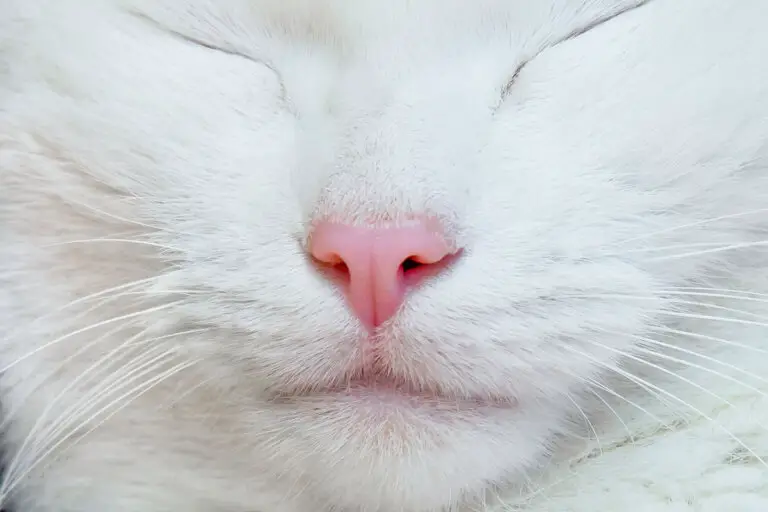
Why Do Cats Curl Their Lips?
Cats curl their lips because of the roof of their mouths contains extra scent receptors that help them get a better whiff. When an animal curls back its upper lips, it traps pheromones, chemical molecules involved in sexual attraction, and transfers them to the roof of its mouth.
Lip curls, also known as the Flehmen response, allow the scents to easily reach an olfactory organ deep within the animal’s nose.
Cats are not the only animals that curl their lips – horses, giraffes, elephants, buffalos, goats, lamas, pandas, hippos, and many others do this as well.
Cat Lips Are Turning Black
The natural color of lips for all cats is pink.
If the lips of your cat are turning black, it is because of postinflammatory hyperpigmentation. Hyperpigmentation is a harmless condition in which the skin produces more melatonin, causing the skin to darken.
What causes increased melatonin levels in cats?
The main cause of increased melatonin levels in cats can be a sudden change in the environment your cat is surrounded by. If you’ve suddenly moved from a very cold climate zone to a very warm location, it may affect your cat’s body in various ways, and it will take some time for your cat to adjust.
If your cat is spending a lot of time in sun exposure, it can lead to increased level of hormones that synthesize melatonin.
In cats, however, this is extremely rare because cats have naturally higher body temperature as part of their genetic makeup, allowing them spend a lot of time in the sun, and most cats have a great deal of fur covering their entire bodies to keep them warm.
The good news is that if your cat is suffering from hyperpigmentation, it can fade away over time, even without treatment. However, it will take between 3 to 24 months for the skin to fully fade, and in some cases it may take longer.
The length of time it takes for skin levels to fade away depends on how dark the spot is compared to the surrounding skin.
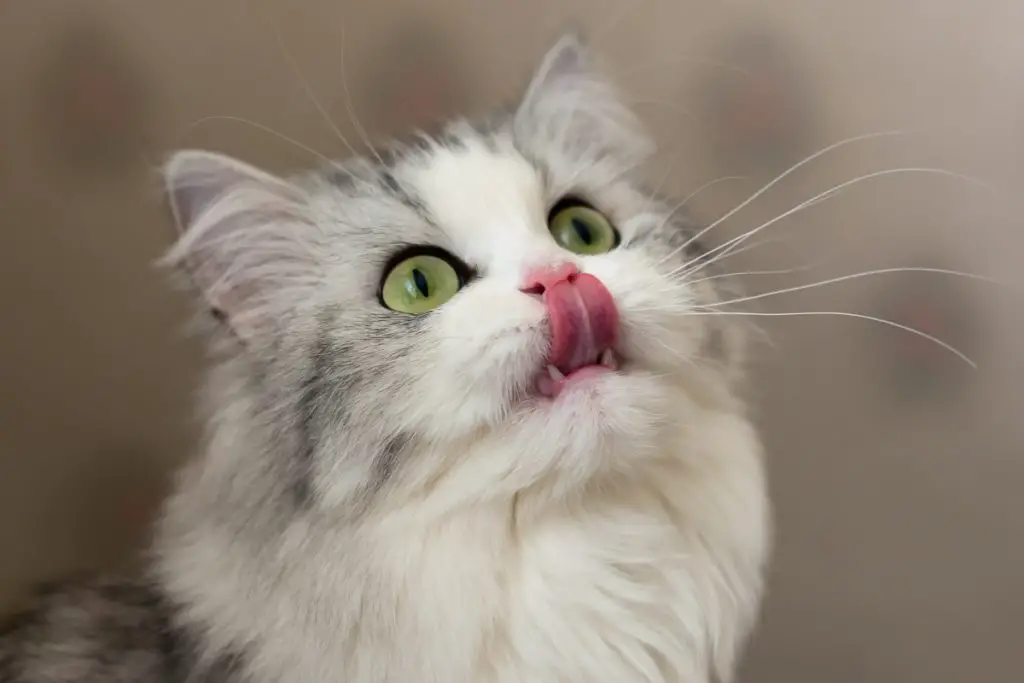
Black Spots On Cat Lips
Some cats may have black spots on their lips. This can be commonly mistaken as a sign of illness or health issue but in fact, these spots are most likely freckles inherited from the mother.
Specific cat breeds such as Tortoiseshell cats have these black spots on their lips as part of their genetic breed. These breeds have a greater tendency to get spots of extra melanin across their bodies.
The official medical term for a lot of black spots is lentigo simplex. If you notice a lot of black spots, this is called lentigo profusa. Both of these are completely harmless and simply a part of the physical appearance of your cat. There might be just a few when a cat is young, but, similar to humans, more may appear as the cat is growing up.
Do not try to clean these black spots as it will only harm your cat.
Cat Lips Are Turning Pale
If the lips of your cat are turning pale, do not be concerned. This natural loss of pigment gradually happens to all cats as they get older.
Pale lips can also be associated with anemia, a lack of healthy red blood cells to carry out the oxygen to body’s issues. If you inspect your cat’s mouth and its gums are also pale, go to the veterinarian.
“Pale gums and lethargy indicate the need to perform blood tests.” Anemic cats also have little stamina or energy so they seem listless or tire more easily.
By Malcolm Weir, DVM
The condition in which cats skin color it is lighter than its normal color is called hypopigmentation. Hpopigmentation, also called depigmentation, is extremely rare and the result of a genetic disorder.
Cat Lips Are Swollen
The most common cause of swollen lip in cats is the eosinophilic granuloma complex. The eosinophilic granuloma complex is an allergic response to flea or worm parasites.
Eosinophils are naturally white blood cells that protect the immune system of cats body, patrolling for biochemical signals from the tissue telling them that a parasite has invaded. The white blood cells work with granuloma to group the inflammatory cells together in a lump or solid structure, guarding body from the the infective parasites to come through.
When cats get an infection on their lips, they scratch their lips with their paws in effort to remove them, which only worsens the condition.
Some of the other causes of swollen lips in cats are allergies, a bacterial infection, a viral infection, a cancerous condition, various dental conditions, chin acne and so on.
If your cats lips are enlarged or swollen, make sure the visit the veterinarian.
The good news is this condition goes away quickly in 90% of the cases if treated properly. Your veterinarian will give you all the information you will need.
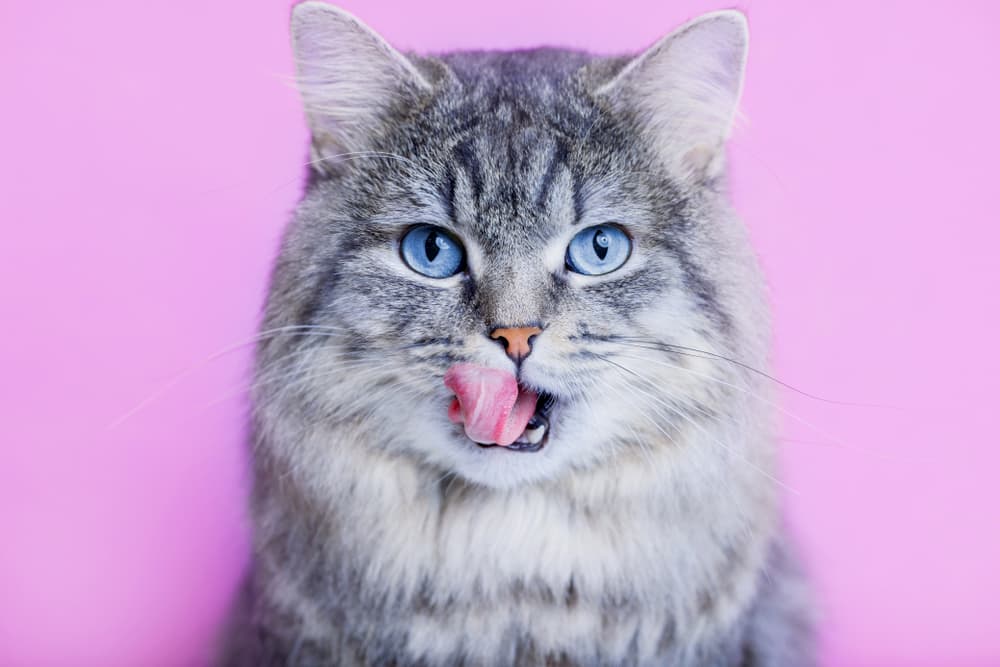

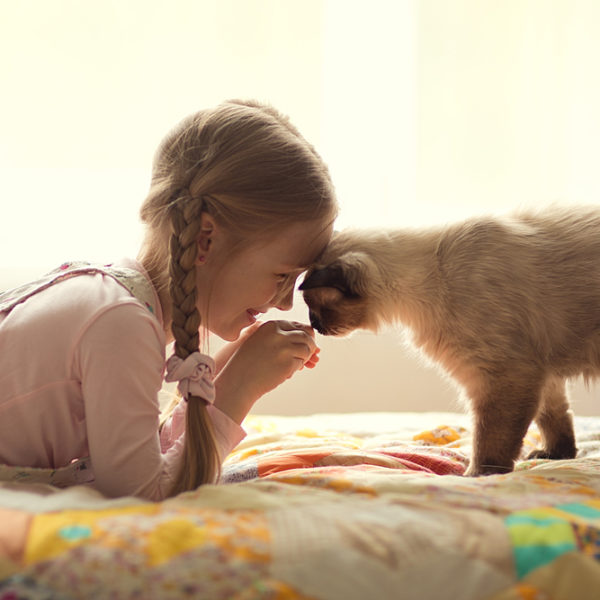
Leave a Comment